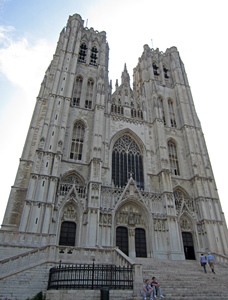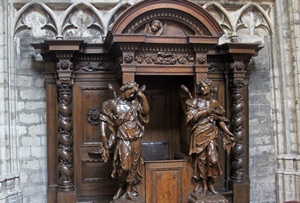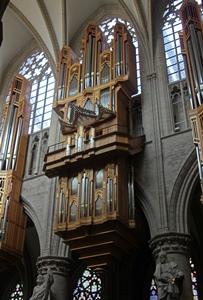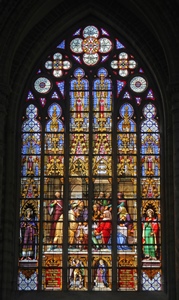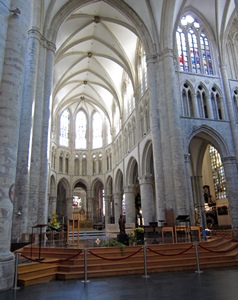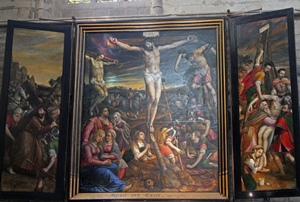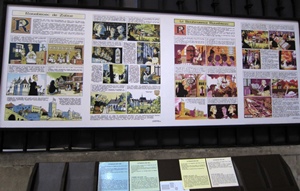The Brussels church commonly referred to as St. Michael’s Cathedral is really called The Cathedral of St. Michael and St. Gudula. St. Michael is the archangel (an angel among angels) who is said to have been responsible for the defeat and eviction of Satan from heaven. St. Gudula lived in Flanders in the late 7th and/or early 8th Centuries and is said to have lived a life of humility while performing a number of impressive miracles. One such miracle was the miraculous relighting of a lantern after its flame was blown out by demons. Together, Sts. Michael and Gudula are the patron saints of Brussels (that’s a golden St. Michael on top of the Town Hall spire). The cathedral was constructed as a Gothic collegiate church over a 300-year period and was completed in 1519. It didn’t receive cathedral status until 1962 – it now shares this status for its diocese with St. Rumbold’s Cathedral in the nearby city of Mechelen. But it’s the church of choice for important events in the royal family.
We found the cathedral to be within walking distance of our hotel. The figures embedded in its façade appeared to be in pretty good condition.
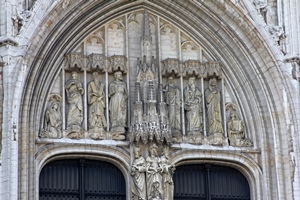
Figures Above Center Portal Med Lrg Xlg |
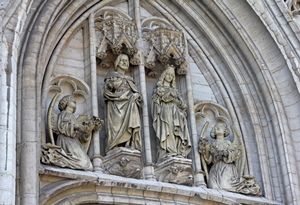
Figures Above Right-Hand Portal Med Lrg Xlg |
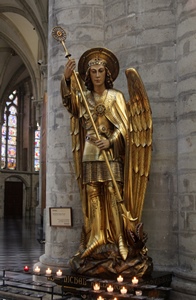
St. Michael Med Lrg Xlg |

St. Gudula Med Lrg Xlg |
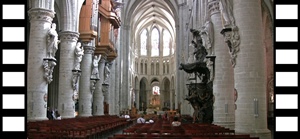
Nave, Columns and Apostle Statues MP4-Sml MP4-Med WMV-HD |
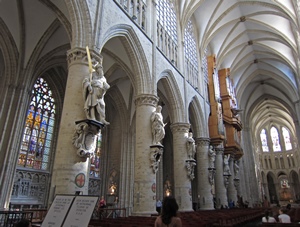
Columns, Saints and Stained Glass Med Lrg |
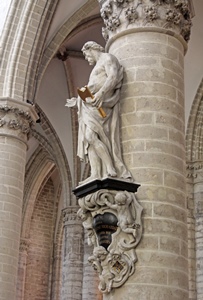
St. Thaddeus Med Lrg Xlg |
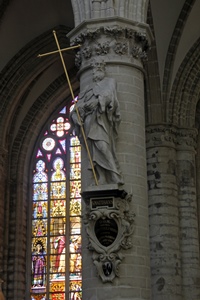
St. Matthew Med Lrg Xlg |
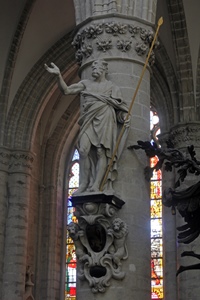
St. Thomas Med Lrg Xlg |
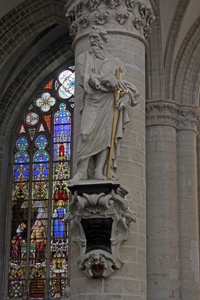
St. Paul Med Lrg Xlg |
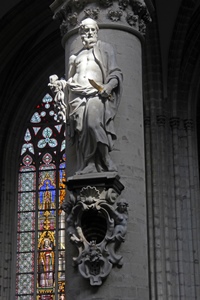
St. Bartholomew Med Lrg Xlg |
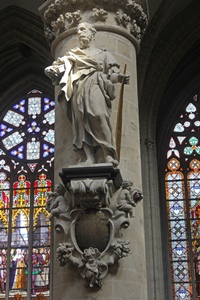
St. James the Less Med Lrg Xlg |
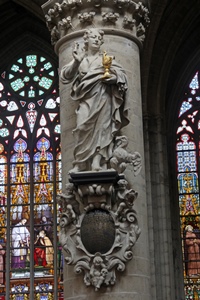
St. John the Evangelist Med Lrg Xlg |
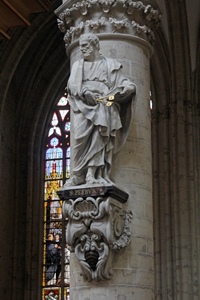
St. Peter Med Lrg Xlg |

Pulpit (Hendrik Frans Verbruggen, 1699) Med Lrg |

Pulpit Detail Med Lrg Xlg |
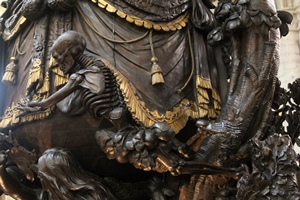
Pulpit Detail Med Lrg Xlg |
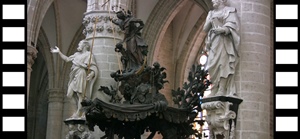
Pulpit, Nella and Connie MP4-Sml MP4-Med WMV-HD |
The church’s main organ was installed in 2000, by German organ-builder Gerhard Grenzing. It has 4300 pipes, four keyboards and 63 stops.
Throughout the church are stained glass windows. Most are from the 19th Century, but there are older windows as well.
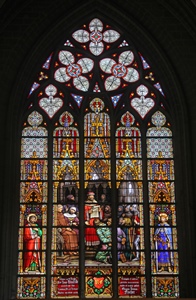
Stained Glass (J.B. Capronnier, 19th C.) Med Lrg Xlg |
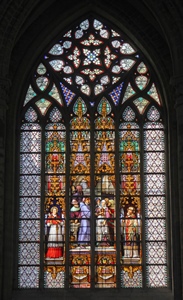
Stained Glass (J.B. Capronnier, 19th C.) Med Lrg Xlg |
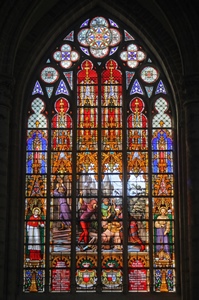
Stained Glass (J.B. Capronnier, 19th C.) Med Lrg Xlg |
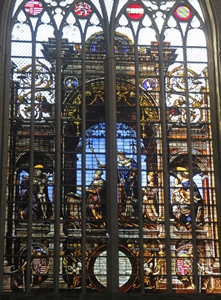
South Transept Window (Jean Haeck, 1538) Med Lrg Xlg |
Of similar vintage to the organ is a shiny new platform at the transept crossing.
Working forward, there is a 19th-Century altar toward the front, and in the apse there is an altarpiece from 1538.
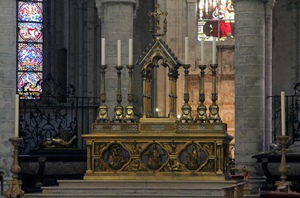
Altar (Lambert Van Rijswijck, 1887) Med Lrg Xlg |

Altar and Seats Med Lrg |
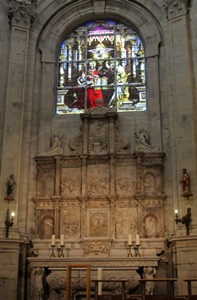
Altarpiece (Jean Mone, 1538) and Window Med Lrg Xlg |
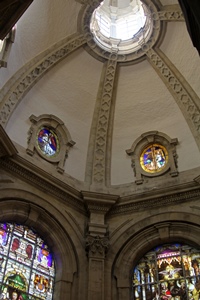
Dome Med Lrg Xlg |
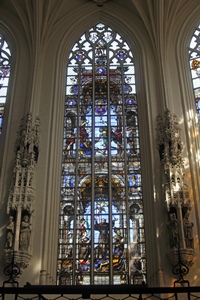
Stained Glass (Jean Haeck, ca. 1540) Med Lrg Xlg |
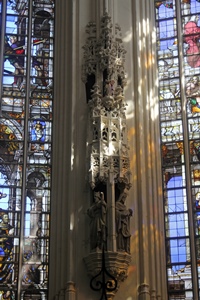
Sculpture, Chapel of the Holy Sacrament Med Lrg Xlg |

Tomb Med Lrg Xlg |
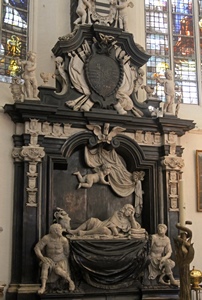
Tomb Med Lrg Xlg |
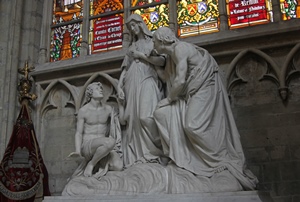
Chapel Sculpture Med Lrg Xlg |
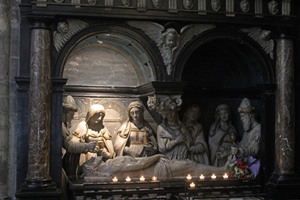
Statue Group Med Lrg Xlg |
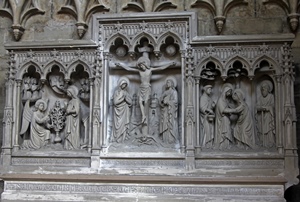
Relief Med Lrg Xlg |
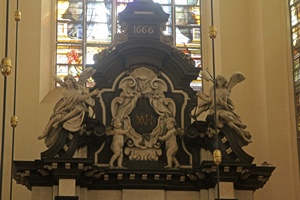
Chapel Decoration Med Lrg Xlg |
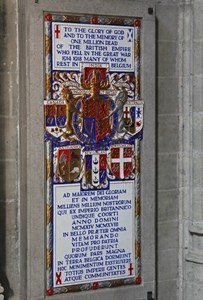
Memorial to World War I Dead Med Lrg Xlg |
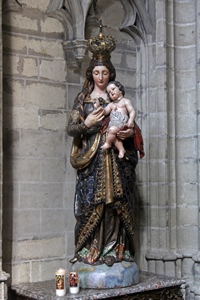
Madonna and Child Med Lrg Xlg |
In our exploration of the church we noticed another product of the 21st Century – a display of what appeared to be Catholic comics. Apparently an effort to appeal to a younger generation, we weren’t able to tell whether they were funny or not, as we didn’t speak the language. I suspect probably not – the Catholic establishment doesn’t have a reputation of being particularly comical. But if they really want to appeal to a younger generation…
From the cathedral we headed back up the hill we’d climbed a couple of days earlier. Our plan was to visit the Royal Museums of Fine Arts.
